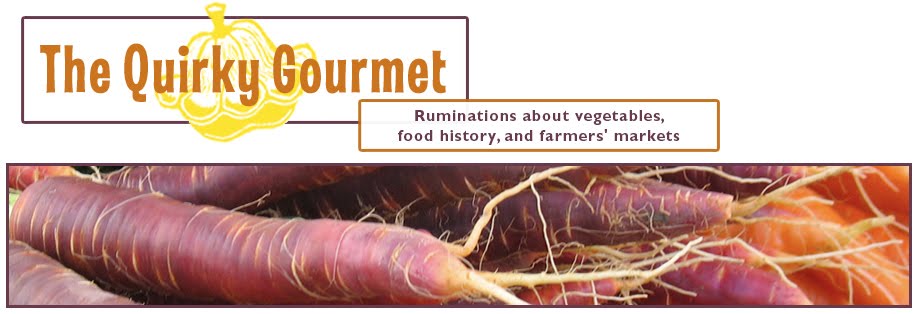
As a long time farmers' market vendor, I've experienced hundreds of on site health inspections. Some have involved red "critical" violations. Once I hadn't prepared a bleach bucket, though I did have bleach, water, and a container for bleach water on hand. Several times I've been cited for having handwashing water that was a few degrees cooler than the 100 degrees that the health department requires.
The most common violation found on my company's health inspection reports lately involves a regulation called the four hour rule. The health department allows you to hold potentially hazardous foods in the danger zone (40 degrees F to 140 degrees F) for up to four hours as long as you discard them at the end of this time. In order to use this rule and be in full compliance, you must write down the time that you took the product in question out of your cooler, as well as the time (four hours later) that you plan to discard it.
Most of the markets where my business vends are only four hours long. If we take our cheese out of the cooler at the beginning of the market and discard it at the end of the market, we are complying with the spirit of this rule. But if the health department shows up and we haven't written down that we took the cheese out at, say, 10AM when the market started, they write it down as a red, critical violation.
I'm not downplaying the importance of genuine food safety, especially at farmers' markets. Food should be kept sufficiently cold or hot, surfaces should be kept clean, and folks handling food should never have bare hand contact with ready to eat foods. In addition, food should be handled conscientiously at every stage in the process, from the time we purchase ingredients, to the time we prepare it in our kitchen, to the time we serve it at the markets. But lumping together this failure to record the time we took the cheese out of the cooler with genuinely serious violations like failure to wash hands after using the bathroom does a disservice to vendors, customers, market administrators, and even health inspectors.
Although there have been articles in recent years claiming that health regulation at farmers' markets is particularly lax, farmers' market booths are actually more meticulously regulated than any other food service establishment I've ever known. Market administrators enter into an agreement with the health department requiring them to provide proxy inspections of booths handling potentially hazardous foods on every single market day.
This is the equivalent of having a restaurant inspected every single day that it is open to the public. (Most restaurants are inspected only once or twice a year.) The inspections certainly aren't as thorough as the ones the health department performs. For example, a market manager probably wouldn't notice if my hand washing water was a few degrees cooler than it should be. But the market managers rightfully take this responsibility very seriously, because all of our livelihoods and reputations depend on not making the public sick.
So why the media hype? I think it stems partly from the fact that farmers' market booths are so out in the open and transparent. You rarely see a restaurant kitchen as exposed as a market booth, and this leaves market vendors open to a higher level of scrutiny and judgement. If the cook at your favorite restaurant drops your food on the floor, he can pick it up and plate it and you'll never know. (Ever hear of the three second rule?) That could never happen at a farmers' market because someone would inevitably see and report the incident to a market manager, resulting in an earnest talk about how the reputations of all vendors are on the line when a single vendor puts customers at risk.
It also doesn't help that many smug, self satisfied market patrons play down the importance of food safety at farmers' markets, claiming that farmers' market food is inherently safer than mainstream industrial food. Artisan food producers do tend to care more about the food they produce, there is some evidence that grassfed beef does tend to have lower levels of e coli than factory farmed beef, and a foodborne illness from a farmers' market product is much easier to trace and address than one caused by a huge outfit that distributes product in many states, under multiple brand names. But that's no reason to be complacent, and food mishandled by small producers is just as likely to make you sick as food mishandled by industrial behemoths.
Last weekend a reporter from KUOW showed up at the Ballard Farmers' Market with a health inspector who works closely with local farmers' markets. The inspector performed a couple of inspections, including one of my booth, explaining about the regulations and checking temperatures and handwashing stations. As far as I know, the story hasn't aired yet, but it struck me as an effort to show another side of the story, about the hard work that we actually do put into keeping our booths and our product safe.
I'm assuming the reporter felt okay about what she saw and heard, because she swung back around after the interview and bought a quesadilla.



